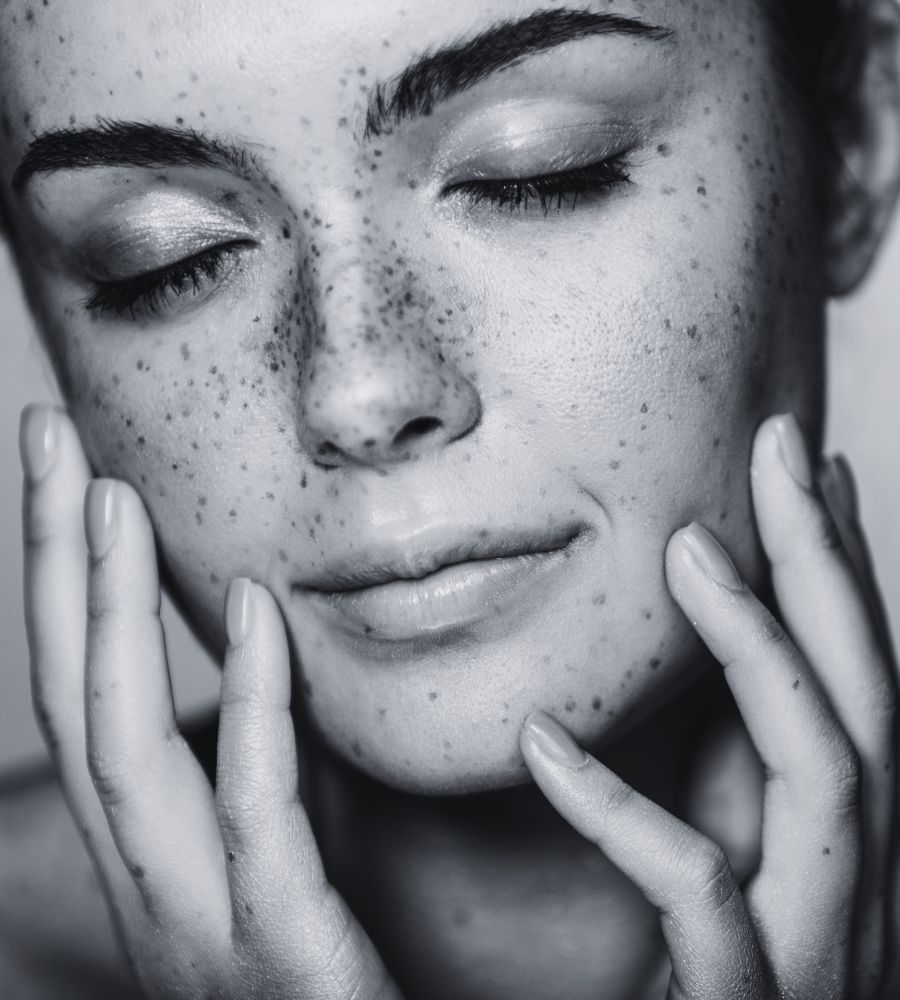With summer just a memory, now is the time to fade sun spots and reverse visible signs of sun damage with a course of IPL at Privée Cinic. Ideal for lightening non-hormonal hyperpigmentation and evening out the complexion, Intense Pulsed Light (IPL) is one of our most popular treatments during winter. And for good reason. Read on to discover everything you need to know about IPL and its rejuvenating benefits.
What is IPL?
Intense Pulsed Light or IPL refers to the use of light energy for skin rejuvenation, hair removal, and to treat specific skin concerns such as acne. As short bursts (‘pulses’) of intense light are administered to the surface of the skin, thermal energy penetrates into deeper skin tissue to performs tasks such as breaking down pigment, boosting collagen production, and constricting blood vessels to improve the appearance of broken capillaries.
What is IPL used for?
IPL’s first application was in permanent hair reduction, but it is now also considered an effective, non-invasive treatment for skin rejuvenation. As well as addressing redness and vascular concerns (spider veins, broken capillaries), it can be very beneficial for those with active acne as well as scarring. It is also used for skin tightening, addressing enlarged pores, and wrinkle reduction. However, the usage we’re highlighting post-summer is IPL for sun damage.
How does IPL reduce sun damage?
General sun damage, freckles and sunspots can be successfully treated with IPL, with the best results achieved on fair-skinned individuals with areas of dark pigment (the same goes for hair removal – dark hair and pale skin is the most suitable combination). Quick flashes of light target areas of excess melanin, causing them to heat up, break down and flake off (or be absorbed by the lymphatic system), in a process known as Photothermolysis.
After the initial IPL treatment, pigment in the treated areas turns quite dark and will remain darker for the next week or so, until gradually flaking off. The majority of the pigment is gone after the first treatment, however second and third treatments are typically needed to mop up the remaining bits of pigment and further lighten the skin.
Can anyone have IPL?
IPL can be used on most skin types, but is usually unsuitable for darker skin tones. In these individuals, more treatments are required at a lower setting in order to reduce the risk of post-inflammatory hyperpigmentation (PIH). A course of peels is therefore considered a safer option for treating sun damage. IPL is not recommended for melasma (hormonal hyperpigmentation), as the condition can be stimulated by the heat and become worse. (Cosmelan, on the other hand, is very successful at improving melasma.)
IPL is also contraindicated for pregnant women, those with diseases that are stimulated by light (eg epilepsy), and for those on photosensitive drugs, such as Roaccutane.
Treatments required & downtime?
For IPL for sun damage, we recommend three sessions spaced about one month apart. The treatment is not painful, but has a sensation similar to a rubber band snapping on your face. Any discomfort is minimised with the application of a cooling gel pre-treatment. There is no downtime, and you can immediately return to your daily activities.
To enquire about IPL for sun damage, redness, acne or rejuvenation, call Privée Clinic on (02) 8041 5725.

No comments.